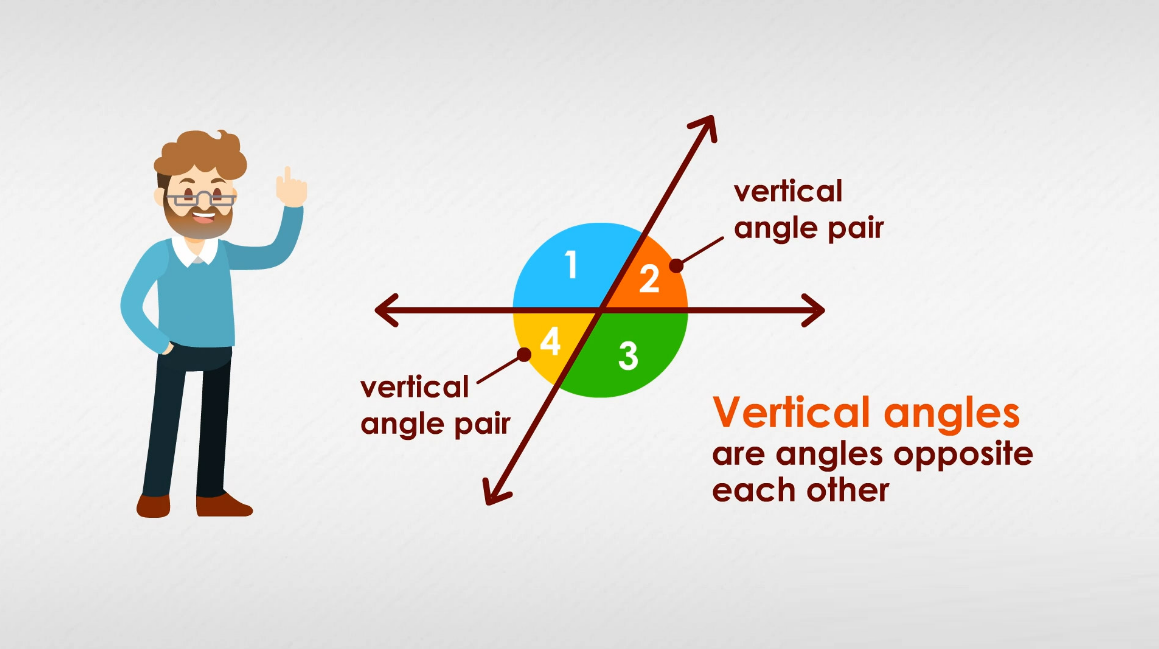The vertical angle is formed when two lines meet at a point. They are always equal to each other. When two lines cross or intersect, four angles are formed. We can observe that two angles that are opposite each other are equal, and these angles are called vertical angles. They are also referred to as ‘Vertically opposite angles’ as they lie opposite to each other.
Table of Contents
What are Vertical Angles?
When two lines intersect, four angles are formed. There are two pairs of nonadjacent angles. These pairs are called vertical angles. (∠1, ∠3) and (∠2, ∠4) are two vertical angle pairs.
Vertical Angles Definition
A vertical angle is a pair of non-adjacent angles formed by two straight lines intersecting. Simply put, vertical angles are located in the corners of an X formed by two straight lines. They are also called vertically opposite angles since they lie opposite to each other.

Vertical Angles Theorem
The vertical angle theorem states that two opposite vertical angles formed by two lines intersecting each other are always equal (congruent).
FAQs
When two lines intersect, they form vertical angles. From the 4 angles that are formed, the angles that are opposite one another are vertical angles.
These angles are also known as vertically opposite angles. These angles are always equal.
Vertical angles are formed when two straight lines intersect each other. Vertical angles are always congruent and equal.
The two pairs of non-adjacent angles formed by intersecting two lines are congruent as they superimpose on each other.
Any two angles that add up to 180° are called supplementary angles. The vertical angles are each 90° if the vertical angles are right angles or equal to 90°. Thus, the sum of these two angles will be 180°.
In such cases, vertical angles are supplementary. This is a special case where the vertical angles are supplementary. In all other cases where the values of each vertical angle are less than or more than 90 degrees, they are not supplementary.
According to the vertical angle theorem, two intersecting lines that form vertical angles are congruent. The vertical angles are of equal measurements.
For example, If ∠a, ∠b, ∠c, ∠d are the 4 angles formed by two intersecting lines and ∠a is vertically opposite to ∠b and ∠c is vertically opposite to ∠d, then ∠a is congruent to ∠b and ∠c is congruent to ∠d.
Yes, vertical angles can be right angles. Right angles are formed when two opposite vertical angles measure 90° each. The x-axis and y-axis lines of a cartesian graph show this.
Unlocking Potential: Jobaaj Learnings’ Gateway to Industry Expertise and Career Growth
Jobaaj Learnings provides industry-focused educational programs and personalized micro-learning in India. It offers live training, project work, and career support products like AI Resume Builder and LinkedIn Optimizer.
With workshops in Data Analytics, Management Consulting, and Finance, it caters to students and professionals seeking practical skills and real-world experience. The platform is celebrated for its extensive content, expert mentors, and commitment to practical, accessible education.
